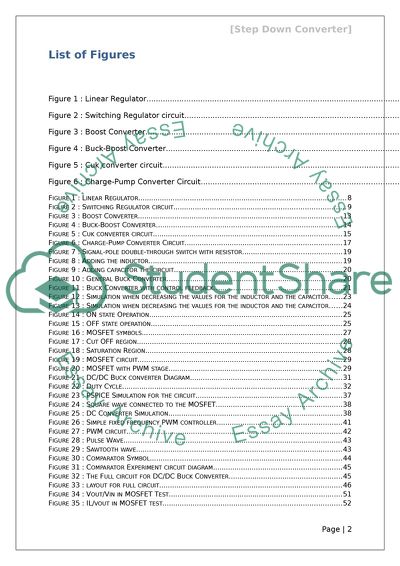Cite this document
(Ways and Techniques of Control the Output Voltage by Applying of DC/DC Coursework Example | Topics and Well Written Essays - 3000 words, n.d.)
Ways and Techniques of Control the Output Voltage by Applying of DC/DC Coursework Example | Topics and Well Written Essays - 3000 words. https://studentshare.org/engineering-and-construction/1797816-dc-to-dc-buck-converter
Ways and Techniques of Control the Output Voltage by Applying of DC/DC Coursework Example | Topics and Well Written Essays - 3000 words. https://studentshare.org/engineering-and-construction/1797816-dc-to-dc-buck-converter
(Ways and Techniques of Control the Output Voltage by Applying of DC/DC Coursework Example | Topics and Well Written Essays - 3000 Words)
Ways and Techniques of Control the Output Voltage by Applying of DC/DC Coursework Example | Topics and Well Written Essays - 3000 Words. https://studentshare.org/engineering-and-construction/1797816-dc-to-dc-buck-converter.
Ways and Techniques of Control the Output Voltage by Applying of DC/DC Coursework Example | Topics and Well Written Essays - 3000 Words. https://studentshare.org/engineering-and-construction/1797816-dc-to-dc-buck-converter.
“Ways and Techniques of Control the Output Voltage by Applying of DC/DC Coursework Example | Topics and Well Written Essays - 3000 Words”. https://studentshare.org/engineering-and-construction/1797816-dc-to-dc-buck-converter.


